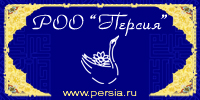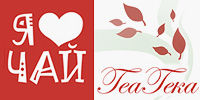Summary
 |
Pamir, a photo essay by Antonina Zakharova and Pavel Borisov, opens the first issue of 2013. The section «Japanese Notebook» presents poorly known aspects of Russia’s Eastern neighbour’s history and culture.
- Aleksandr Meshcheryakov. Japanese Gardens of Joy. In the work of Kaibara Ekiken (1630—1714) «The Sermon on Joy» («Rakkun») is affirmed that this is the nature which plays the leading role in the human’s obtaining of joy. Not so much the natural landscapes as the gardens created by people, the Tokugawa period gardens as an example.
- Maya Gerasimova. The Own Manner to Understand the Things. The Japanese manner to understand the things is to reveal the beauty which is not only contained in every season but also in seasons’ rotation that reminds of the momentary and the eternal. This is reflected both in literal texts and in everyday things — plates, vases, fans, boxes, kimonos, etc.
- Maria Toropygina. Three Deities of Poetry. In medieval Japan the deities composed songs, and good poets, leaving this life, easily converted themselves into deities. The article’s author tells about the role played in the art of poetry’s development by the three deities — Sumiyoshi, Sotooshihime and Hitomaro — and their sanctuaries.
- Amir Hisamutdinov. Left in a Word. In the libraries of Hakodate, Nagasaki, Kobe and Tokyo there are many documents reflecting «the Russian presence». Among them there are drawings that tell the story on Russian sailors’, Vasily Golovnin and Nikolay Rezanov, staying there, Orthodox literature, works of Russian emigrants.
- Ekaterina Simonova-Gudzenko. On the Scene and Around. The writer Konstantin Simonov made three visits to Japan. This country attracted him with its culture and esthetics. The magazine publishes for the first time the extracts of writer’s diary dealing with his acquaintance with Kabuki theatre actors and the wide publisher’s commentary.
- Sergey Smirnov. The Confucianism in the Context of Orientalistic Discourse. The European imagination on China not once changed its appreciation of the Confucianism. The symbol of the Confucianism renaissance in China itself was the restoration in 1984 of the Confucius image in his family temple; and in 1990s CPR authorities declared the Confucianism the main component of the Chinese intellectual tradition and economic progress.
- Aleksandr Bondarev. Titus and Berenice: Power or Love? The most famous romantic pair of Antiquity was by right Caesar and Cleopatra. But there were other ones. The love between the Roman Emperor Titus and the Judean princess Berenice was out of logic, even unbelievable, but this is the way the true love’s signs are. , the article’s author thinks
- Konstantin Panchenko. Malta, nearly the Orient. Neolithic genes, Semitic language, Catholic soul — these are the island of Malta inhabitants in this essay author’s imagination. Here was the front line of civilizations clash, here thickened nearly for three hundred years the unusual concentration of passions, aggressive energy and fanatic faith.
- Tatyana Solovyova. The Saracen, Warrior, Christian Woman. There is an idea that in the Arabic society the place of woman is determined by her house and her family. But in pre-Islamic period among different Bedouin tribes the woman’s position differed. For example, the brilliant fate of the Bedouin queen Maviah (IV c.) about whom many stories of Arabic and Byzantine historians are survived
- Sergey Toroptsev. Chinese «Nobel» Without Scandal. The Nobel Prize in Literature winner of 2012 is Mo Yan , and for the first time this award is not accompanied with any scandal (last year winner Gao Xingjian is an immigrant). The works of Mo Yan are attributed to the style of «roots seeking», the followers of which treat peasantry the stronghold of traditions and the base of social stability.
- Svetlana Uturgauri. Russian Artists in Istanbul. Among Russian emigrants who lived in Turkish capital in 1920s there many talented artists. Nearly all of them painted Istanbul, but everyone had his own city. Byzantine art monuments, sultan Dolmabahçe palace, old Christian yards, Bosphorus with its embankments, scenes of city life.
- Dinar Khayrutdinov. «Great Multitude of Djinns and People». The question of how science fiction is combined with the dogmas of Islam still provokes discussions. In reality the composing of science fiction works with their traditional excurses to the future and inventing unusual technologies does not contradict Islamic teaching, and this is proved by the successes of Arabic science fiction.
- Andrey Shugayev. On an Experience of Reading a Book with Postcards in Hands. While reading Alfonse Daudet’s «Tartarin of Tarascon», the author-deltiologist wondered how magically the writer’s impressions on his travel to Algeria in 1860s correspond to the motives of postcards issued there forty years after.
- Antonina Zakharova. To Make Porridge in Laos. For lunch — sticky rice stewed in a new bamboo stem, for dinner — sticky rice again, mushroom soup as an addition and fern salad. Sticky rice is the main meal in the Country of One Million Elephants.
- Nikolay Listopadov. The Successors of Thomas the Apostle. The Centenary celebration of the founding Malankara Orthodox Syrian Church catholicate in India took place in Chennai. Here the relic of St. Thomas, who brought the Christianity to Hindustan, is kept.
- Rahimiddin Zahari. Shaman Pak Da Megat. The short story of modern Malaysian writer in translation by Viktor Pogadayev with the photo essay on the shamanic mystery in Kuala Lumpur.
Our «Orientnet» section presents web resources on «National Fruits of the East» theme.






